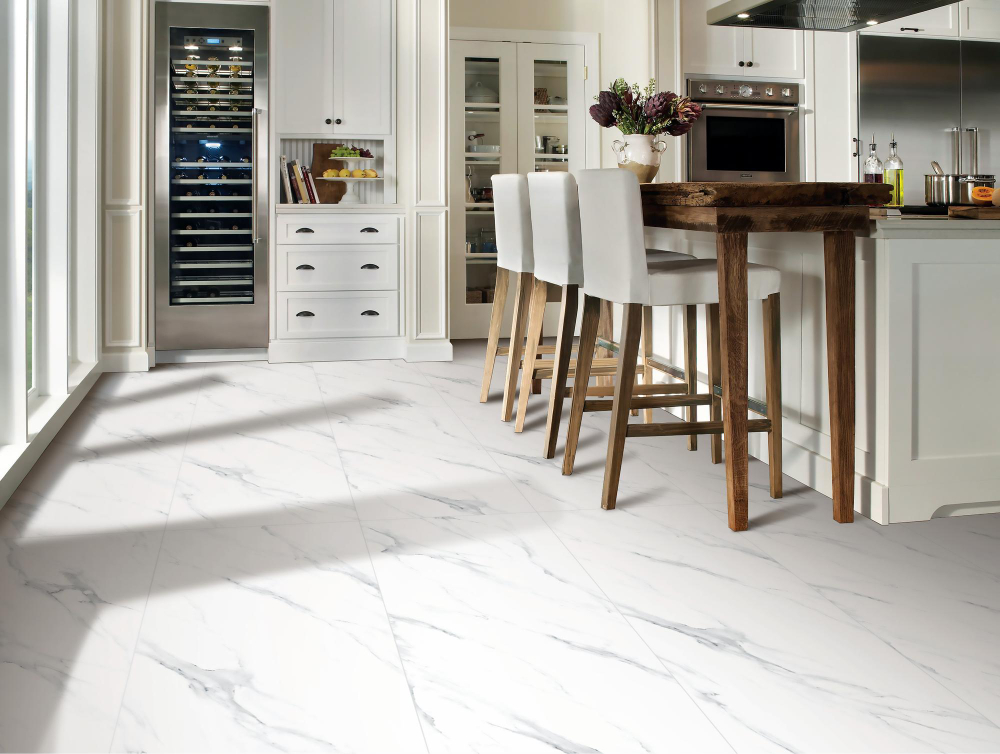Grease buildup in kitchens presents fire risks and may give rise to legal consequences. It can damage equipment such as range hoods, stovetops, and ovens. Thus, a grease-free kitchen helps avoid costly repairs and replacements.
In this article, we will discuss the how and why of keeping a kitchen grease-free and clean.
Why Is It Important To Keep Kitchens Grease-Free and Clean?
When aiming for safe and efficient project execution, you should understand the importance of delivering high-quality work. This is especially important in the kitchen, where even the tiniest miscalculation in design can have detrimental effects. Here are three key justifications for creating grease-free and easy-to-maintain kitchen designs.
Reduced Risk and Liability: Kitchens are prone to house fires due to grease buildup, causing property damage, injuries, and loss of life. Proper ventilation and easily maintained surfaces lessen the likelihood of fire.
Noncompliance with ventilation requirements can result in rework, penalties, and delays. Thus, compliance with building codes is essential. Building kitchens that prevent grease buildup ensures compliance and avoids these complications.
Enhanced Project Efficiency and Profitability: Grease-free kitchens are easier to maintain. They reduce callbacks due to fewer issues like grime buildup and permanent damage. They also offer easy cleaning due to smooth surfaces and accessible components, leading to faster project completion times. This is due to the design’s ability to address future issues.
Improved Client Satisfaction and Repeat Business: Easy-to-clean kitchens reduce long-term maintenance costs, making them more enjoyable and reducing the need for future repairs. Clean lines, sleek surfaces, and high-quality materials contribute to a kitchen’s aesthetics and perceived value, attracting happy clients who appreciate functionality and ease of maintenance, leading to more service referrals.
Prioritizing grease buildup prevention strategies offers a multitude of benefits. It fosters a safer environment for homeowners, minimizes potential liability concerns, and promotes long-term appliance health. These factors, combined with creating a beautiful and functional kitchen, lead to a win-win situation.
How To Build a Grease-Free and Clean Kitchen?
A well-designed kitchen is pleasing and useful. Yet, utility extends beyond aesthetics, including establishing a secure and easy-to-maintain place that encourages a clean kitchen. Here’s how you can achieve that by incorporating grease prevention strategies:
Focus on Ventilation: To ensure efficient ventilation in the kitchen, opt for high-performance vented range hoods with the lowest CFM rating that meet industry standards and kitchen size requirements. Position the hood above the cooktop to maximize its effectiveness in capturing grease and smoke during cooking.
Follow the manufacturer’s recommendations for proper installation height and clearance. For a sleek and modern look, consider downdraft venting systems that integrate into the cooktop, capturing grease and steam at the source while keeping the surrounding area clear.
Easy-to-Clean Surfaces: Non-porous materials like granite, quartz, or stainless steel are ideal for countertops and backsplashes due to their resistance to grease and stains, making them easy to clean and less prone to bacteria. Smooth and seamless designs, with minimal grooves or textures, are also recommended to cut the accumulation of grease, making it easier to remove and maintain a clean appearance.
Appliance Selection: Use self-cleaning oven models with high heat to remove grease and food residue. Unlike traditional gas ranges with grates, smooth-top stoves offer a streamlined surface for easy cleaning, allowing quick scrubbing of grease spills with minimal effort.
Extra Grease-Prevention Strategies: Install and clean grease filters within the range hood to prevent buildup and increase fire risk. Extend the backsplash height behind the cooktop to 18–24 inches for a larger area for capturing grease splatters during cooking.
By incorporating these strategies during the design and construction phases, you can create beautiful and functional kitchens and promote a clean and safe cooking environment.
Remember, a well-designed kitchen with effective grease management contributes to long-term appliance health and simplifies future maintenance for homeowners.
How To Go Above and Beyond With Grease Ducts?
While a high-performance range hood is the first line of defense for capturing grease and smoke while cooking, its effectiveness depends on a critical behind-the-scenes player: the grease duct. This essential component completes the ventilation system, ensuring a clean and safe cooking environment.
Grease ducts are crucial for kitchens with vented range hoods, as they vent out hot, greasy air and smoke produced during cooking. They maintain a comfortable working environment by removing excess heat and preventing smoke inhalation, improve air quality by eliminating grease particles and smoke, reduce fire risk by minimizing grease accumulation, and ensure compliance with fire codes and health regulations. Maintaining optimal performance and preventing grease buildup requires regular cleaning and maintenance. Consult qualified professionals and follow local cleaning frequency requirements.
A grease duct access door is a small panel on a grease duct system made of stainless steel and installed at specific intervals for easy access. These access points serve two main purposes: cleaning and inspection. They allow qualified professionals to access the interior for cleaning and removing grease buildup, which poses a fire hazard.
Access doors also allow for visual inspection of the ductwork for damage, corrosion, or blockages. It allows for prompt repairs and prevents potential issues with ventilation efficiency and fire safety. The BA-AA grease duct access door is a perfect example of this specialized solution.
To Summarize
Grease-free kitchen design goes beyond mere aesthetics; it represents a practical investment that enhances functionality and safety. Prioritizing grease prevention strategies ensures a clean, easy-to-maintain environment free from potential hazards. This approach fosters a healthier cooking space, reduces fire risks, and prolongs the longevity of kitchen appliances.
Whether in a restaurant, commercial kitchen, or any food preparation facility, a clean and grease-free kitchen enhances operational efficiency, safety standards, and overall satisfaction. Easy-to-clean surfaces, effective ventilation systems, and smart appliance selections contribute to creating a seamless cooking experience while promoting a hygienic environment.
Embracing a grease-free kitchen philosophy is a strategic move towards operational excellence in cooking spaces. With proper design and maintenance, a grease-free kitchen becomes the cornerstone of a professional, well-kept property where cleanliness, safety, and efficiency are prioritized.

